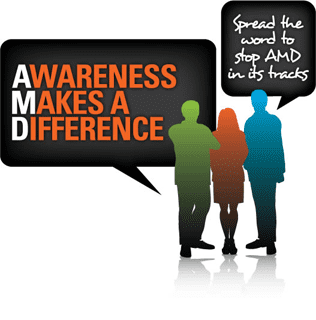The initials AMD stand for a disorder called age-related macular degeneration. AMD is a disease that affects part of the back of the eye called the macula, the central part of the retina. This can cause the center part of your vision to become blurry or wavy. It could also cause a blind spot in the center of your vision.
Who is at risk for AMD?
AMD, or age-related macular degeneration, is a leading cause of vision loss for Americans age 65 and older. As you age, your risk for AMD increases.
What are the signs of AMD?
Signs of AMD become more obvious the longer you have the disease. Symptoms include: straight lines, such as telephone poles or sides of buildings, looking wavy; type or other text looking blurry; and dark or empty spots blocking the center of your vision.
How can I check for signs of AMD?
One of the easiest ways to test for AMD at home is by taking the Amsler Grid test – a simple test of looking at a grid of vertical and horizontal lines. However, this at-home test is no substitute for visiting your eye care professional. Before you take the test, you should know the difference between an eye check or test, and an eye exam conducted by an eye doctor. To learn more, visit Prevent Blindness America's Amsler Grid Test.
How do eye doctors check for AMD?
The key to preventing vision loss is regular eye exams. If you are 65 or older you should get a complete eye exam every one or two years, even if you have no apparent vision problems. During a complete eye exam, called a dilated eye exam, the eye doctor widens the pupil of the eye with eye drops to allow a closer look at the inside of the eye. Be sure to ask your eye doctor for a dilated eye exam. This exam will allow your eye doctor to check for eye diseases such as AMD.
